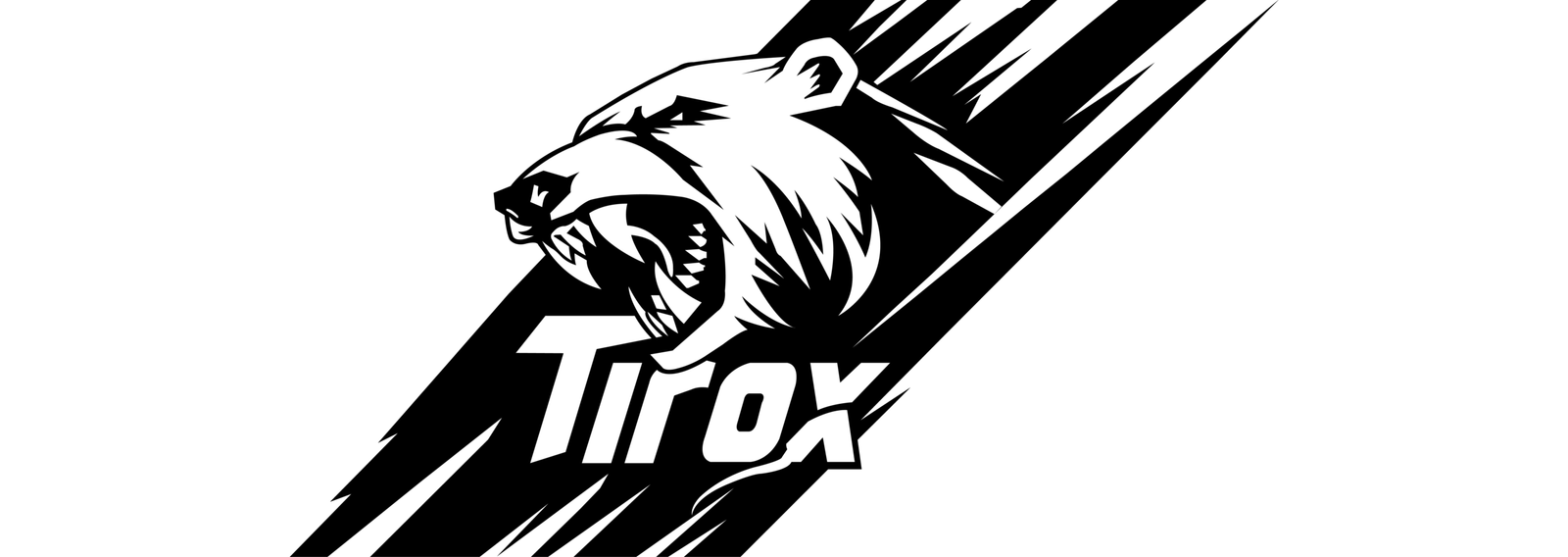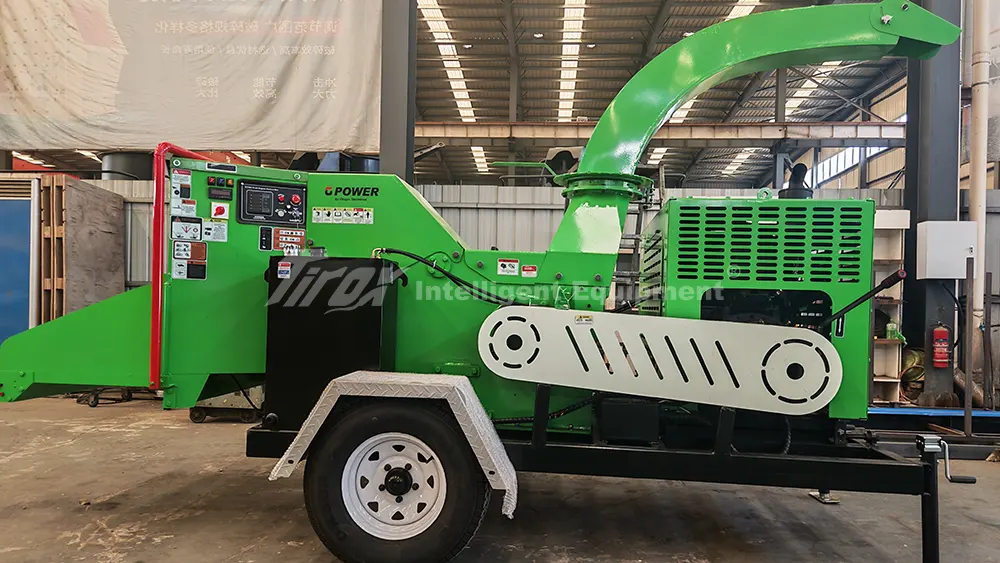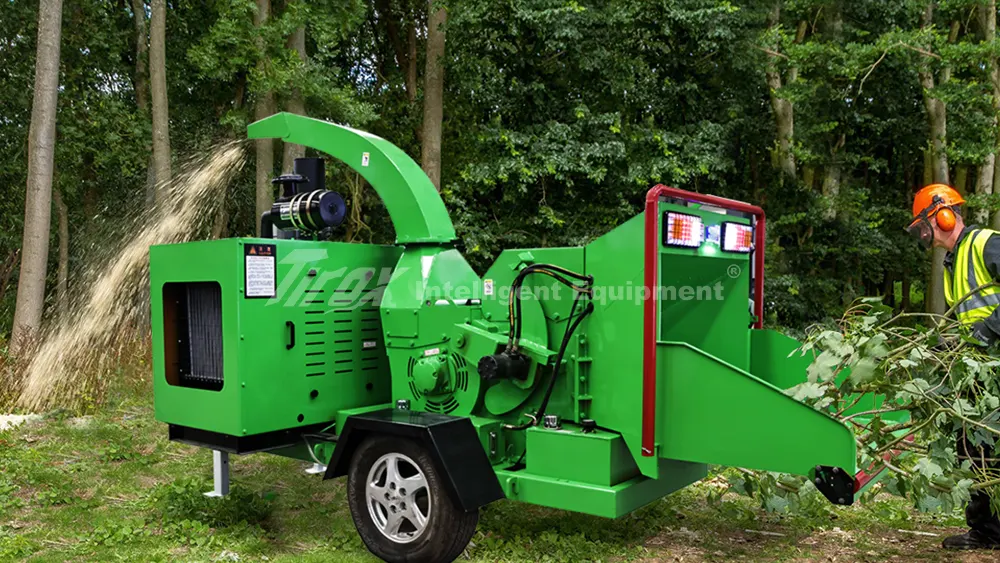You are facing a pile of logs and branches, a huge task 12. You wonder if a wood chipper is strong enough for the job. You need to know its limits before you start.
The size of a log a wood chipper can handle depends entirely on the specific model 79. Small, portable chippers might handle branches up to 120 mm, while large, industrial machines can process logs up to 50 cm or even 80 cm in diameter 516.
In my 22 years of manufacturing wood chippers at TIROX, this is one of the most important questions customers ask 1012. Using a machine that is too small for the job is not just inefficient; it is dangerous 79. The power of the machine, its infeed opening, and its feeding system all determine what it can safely handle 910. Understanding these factors is key to choosing the right tool and getting your work done safely.
How big of a log can you put in a wood chipper?
You have logs to clear, but you are not sure if your machine can handle them. Putting a log that is too large into a chipper is a serious safety risk 7.
The maximum log size a wood chipper can take is determined by its “maximum diameter rating” 9. Our professional models can handle logs up to 50 cm, but you must always check the specific rating for your machine to avoid dangerous overloads 7916.
In my experience, you cannot treat all wood chippers the same 9. There is a big difference between a small brush chipper and an industrial-grade machine 9. A smaller, portable model like our ZSYL-600 is designed for logs up to 120 mm 5. It’s perfect for landscaping or small-scale clearing. But if you try to force a larger log into it, you risk damaging the engine and blades, or worse, causing a dangerous kickback 9. Our larger, industrial machines like the horizontal grinders are built for much bigger jobs 18. For example, some of our heavy-duty models can process logs with a diameter up to 80 cm 16. These machines have the power and heavy construction needed to break down large timber safely 10. The number one rule is to always know the limits of your specific machine 9.
Wood Chipper Class and Log Capacity
| Chipper Class | Typical Max Log Diameter | Best Use Case |
|---|---|---|
| Small Portable Chipper | Up to 120 mm (4.7 in) 5 | Small branches, garden cleanup, light-duty work 15 |
| Commercial Chipper | 15 cm – 30 cm (6 – 12 in) | Tree care services, land clearing, forestry 15 |
| Industrial Chipper | 30 cm – 80 cm (12 – 31 in) 16 | Large-scale biomass production, heavy land clearing 18 |
Always match the log to the chipper’s capacity 7. Never force a log that is too big for the machine’s infeed opening 9.
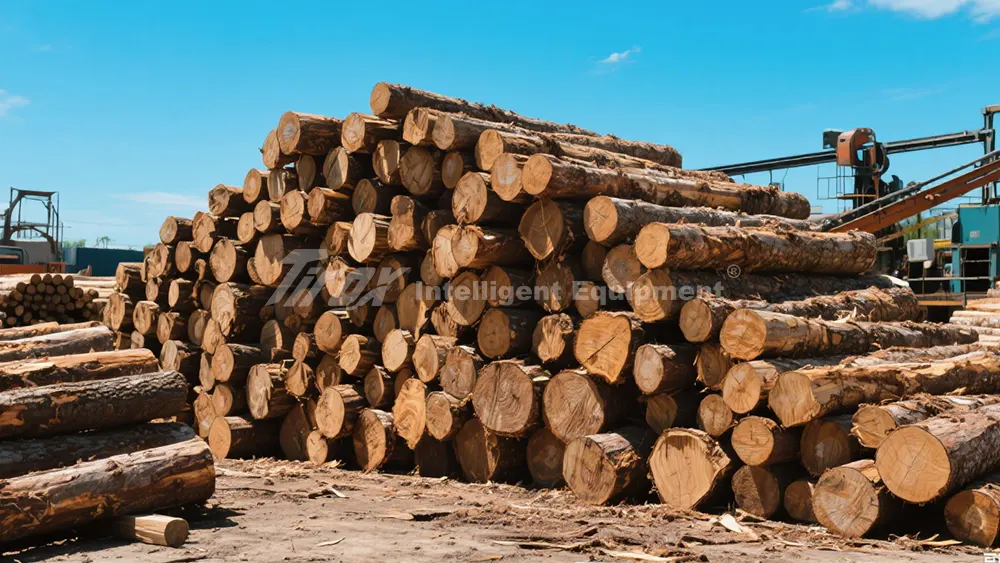
How big a branch can a chipper handle?
You need to clear branches of various sizes. You want to work efficiently without stopping to cut every thick branch into smaller pieces. Knowing your chipper’s limit is key.
A chipper handles a branch based on its diameter, the same way it handles a log 9. Even our smaller gasoline models can typically take branches up to 120 mm (about 4.7 inches) thick, while larger machines handle much bigger ones 59.
From a machine’s point of view, a thick branch is no different than a log of the same diameter 9. The crucial measurement is how thick it is, not whether you call it a branch or a log. Our machines, from the smallest portable units to our large industrial models, are all rated for a maximum diameter 9. So, if your chipper is rated for 20 cm, it can handle any branch or log up to that thickness. However, the type of wood can make a difference. Softwoods like pine are easier to chip than dense hardwoods like oak 13. For bushy or flexible branches, the design of the chipper matters. Many of our machines use hydraulic feed rollers that actively grab and pull the branches in, which helps manage awkward shapes and prevents them from getting tangled 9. This makes the whole process smoother and safer.
Factors Affecting Branch Chipping
- Diameter: This is the most important factor. Always stay within the machine’s specified maximum diameter 9.
- Wood Hardness: Hardwood requires more power to chip than softwood of the same size 13.
- Branch Shape: Long, flexible branches can sometimes wrap around the cutting mechanism in certain chipper types 13. Our drum-style chippers with hydraulic feeders are very good at handling this kind of material 9.
- Condition: Clean wood is best. Feeding in wood with a lot of dirt or mud will dull the blades very quickly, making the machine less effective 11.
For most tree care and landscaping jobs, our garden chippers are perfectly designed to handle a wide mix of branches and smaller logs efficiently 15.
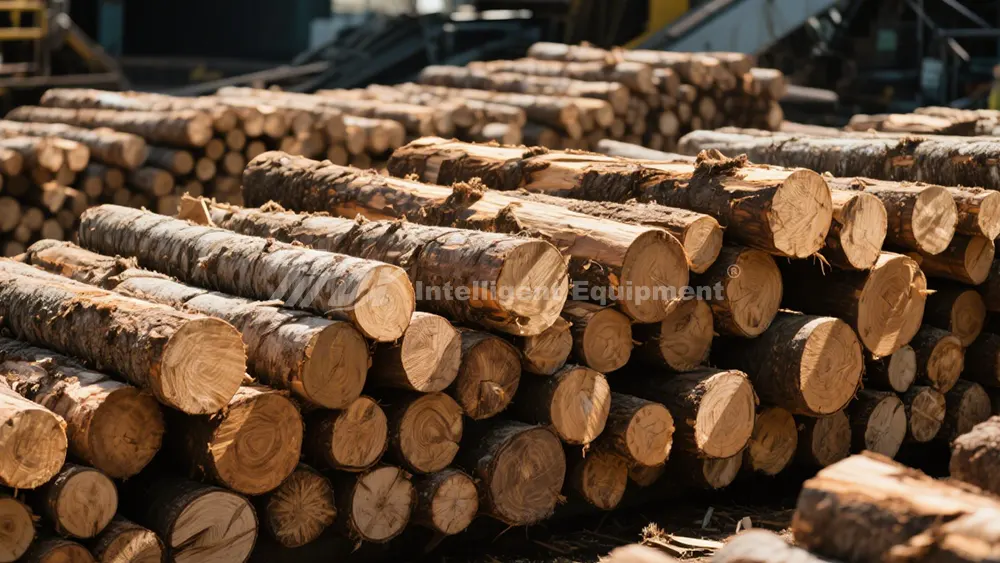
Can wood chippers handle logs?
You have heard wood chippers are mainly for branches. It is a common question whether they are strong enough to process solid, heavy logs safely and effectively 8.
Yes, many wood chippers can absolutely handle logs, but this ability is reserved for industrial-grade models specifically designed for the task 79. These machines are built with the power, feeding systems, and robust construction necessary to process logs safely 7910.
I have been building these machines for over two decades, and I can tell you that a small garden chipper and a large industrial chipper are two completely different beasts 910. You cannot expect a small machine to do a big machine’s job 9. Trying to chip a log with a unit not designed for it is a recipe for disaster 9. Our industrial machines are built to take on logs. This requires several key features. First is power. You need a powerful engine, often over 100 horsepower, to cut through dense wood without stalling 1012. Second is a hydraulic forced feeding system 9. This uses powered rollers to grip the log and pull it into the cutting drum at a controlled speed 9. This is much safer and more effective than trying to push a heavy log by hand 9. Finally, the whole machine, from the frame to the cutting drum and blades, must be built to withstand the immense forces involved in breaking down solid logs 10.
Features Required for Chipping Logs
| Feature | Why It’s Essential for Logs |
|---|---|
| High Horsepower Engine | Provides the necessary torque to cut through large-diameter, dense wood without overloading the system 1012. |
| Hydraulic Feed System | Safely and consistently pulls the heavy log into the chipper, providing control and preventing kickback 79. |
| Heavy-Duty Construction | A robust frame and heavy cutting drum are needed to handle the vibration and impact forces of chipping logs 10. |
| Smart Feed Technology | Some of our models have systems that automatically stop the feed if the engine load gets too high, protecting the machine 111. |
So, yes, chippers can handle logs 7. But it must be the right kind of chipper, one built for heavy-duty, professional work 79.
Conclusion
The size of a log a wood chipper can handle is determined by its specific model. Always check the maximum diameter rating. Industrial chippers with powerful engines and hydraulic feeders are designed to handle large logs safely and effectively.
